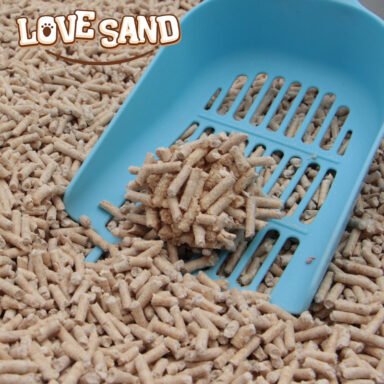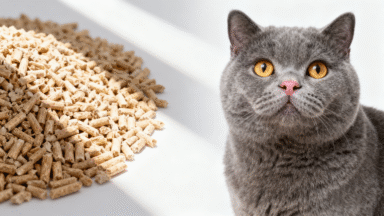Guide to the use of non-agglomerated pine cat litter
Pine cat litter, with its natural environmental protection and strong deodorization, has become a popular choice for cat-raising families, and it can be divided into agglomerated type and non-agglomerated type. There are significant differences in the use logic and applicable scenarios between them.
Understanding these differences can make cat-raising life more convenient.
The agglomerated pine cat litter combines the traditional usage habits of agglomerated sand.

When it meets urine, it will form lumps like bentonite sand.
When cleaning, it is only necessary to shovel out urine and feces with a common cat litter shovel, and a single-layer basin can be used without a special cat litter basin.
This type is friendly to cats who are used to clumping sand, with low adaptation threshold, and the residual sand remains dry, which can reduce the breeding of odor. However, its dosage is relatively large, and new sand needs to be replenished in time after each cleaning, and the long-term use cost is slightly higher than that of the non-agglomerated type.
Non-agglomerated pine cat litter follows the logic of “decomposition and infiltration”, and it will be broken into sawdust powder when it meets urine.
It needs to be used with a double-layer cat litter basin-the upper layer is filled with sand, and the lower layer is covered with a leak-proof pad, and the decomposed sawdust naturally leaks to the lower layer.
Daily, it is only necessary to remove the feces and undecomposed particles in the upper layer and replace the urine receiving articles in the lower layer. It saves consumption, does not need to replenish sand frequently, and can completely replace the upper sand every 2-3 weeks, but it has specific requirements for cat litter pots, and some cats may need an adaptation period.
The choice can be judged according to the actual demand: if the cats at home are used to conglomerating sand, prefer simple operation, or can’t place double-layer pots due to limited space, the conglomerating type is more suitable; If the pursuit of economic consumption, reduce frequent cleaning, and willing to match the special cat litter basin, non-caking type is a better choice.
No matter which type, it can give full play to the natural advantages of pine cat litter and provide a comfortable toilet environment for cats.
Our company has been selling non-agglomerated pine cat litter. Let’s focus on the non-agglomerated pine cat litter pine cat litter.

Non-agglomerated pine cat litter has become the choice of many cat families because of its advantages of environmental protection, deodorization and consumption saving.
However, the use logic different from the traditional agglomerated sand often confuses novices.
You can easily get started by mastering the following steps.
First of all, choose the right litter box.
This kind of cat litter needs to be matched with a double-layer cat litter basin, with pine litter on the upper layer and a leak-proof pad on the lower layer, which is convenient for urine infiltration and separation. If an ordinary single-layer basin is used, it is necessary to lay a 5 cm thick absorbent material at the bottom to avoid urine residue on the basin bottom.
The thickness of sand laying needs to be accurately controlled.
When it is used for the first time, spread pine sand with a thickness of 3-5cm on the upper cat litter basin.
If it is too thick, it will affect the urine seepage velocity, and if it is too thin, it will easily lead to the cat taking it out when planing sand.
After the cat adapts, it can fine-tune the thickness according to the frequency of use, without adding new sand frequently.
There are skills in daily cleaning. Pine sand will decompose into sawdust powder when it meets urine.
Every day, you only need to use a cat litter shovel to remove the undecomposed particles in the upper layer together with feces, and the decomposed sawdust will naturally leak to the lower layer.
When the lower leakage-proof pad is full of urine, it can be replaced directly without dumping the whole basin, which greatly reduces the cleaning workload.
The replacement cycle should be controlled reasonably.
Under normal circumstances, the upper pine sand is completely replaced every 2-3 weeks, and the cat litter basin needs to be cleaned and dried to avoid residual odor. If more cats are used at home, the replacement cycle can be shortened appropriately, the cleanliness of the litter box can be maintained, and the cat’s willingness to use it can be enhanced.
It should also be noted that a small amount of old sand can be retained after the new sand is replaced to help the cat adapt to the smell quickly; If the cat refuses to use it, it can be mixed with a small amount of old sand for transition, and then completely replaced after adaptation. Following these methods can not only give full play to the advantages of pine cat litter, but also make the life of raising cats easier.
non-agglomerated pine cat litter
